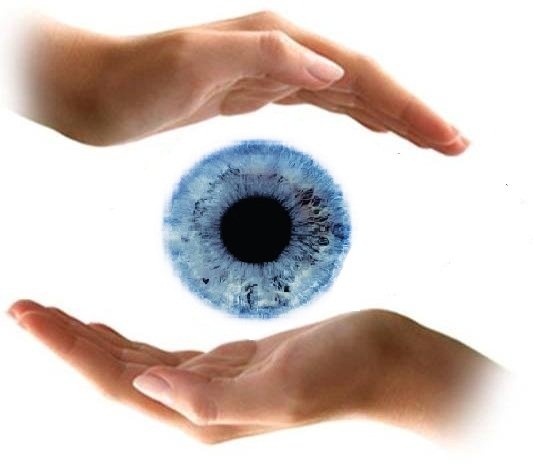All Categories
Featured
With the enhancing use of innovation, direct exposure to ecological factors, and the natural aging process, taking proactive steps to safeguard your eyes is essential. In this blog site, we'll discuss some of the most common eye problems and useful ideas on just how to avoid them, ensuring you maintain ideal vision throughout your life.

- Nearsightedness (Near-Sightedness):
Nearsightedness, or near-sightedness, is a condition where remote things show up blurry while neighboring items remain clear. It occurs when the eye is as well long, or the cornea is too rounded, creating light to concentrate in front of the retina. Nearsightedness is common in youngsters and young people, and its frequency has raised as a result of boosted display time.
Prevention:
Limit display time and encourage routine breaks to avoid eye stress. Promote outside activities, as researches suggest that investing time outdoors can minimize the risk of nearsightedness development in children. If you are identified with myopia, using corrective lenses such as glasses or contact lenses can assist take care of the problem. 2. Hyperopia (Far-Sightedness):
Hyperopia, or far-sightedness, is the opposite of nearsightedness. It happens when far-off things are seen plainly, however close items appear blurred. Hyperopia happens when the eye is also short or the cornea is also flat, triggering light to focus behind the retina.
Prevention:
Regular eye exams can assist find hyperopia early. Comparable to myopia, restorative lenses (glasses or get in touches with) are commonly suggested to fix the vision. Exercising good visual behaviors, such as preventing too much close-up benefit lengthy durations, can additionally help ease signs and symptoms. 3. Age-Related Macular Degeneration (AMD):
AMD is a condition that impacts the macula, the component of the retina accountable for sharp central vision. This age-related condition causes fuzzy or shed vision in the facility of the visual area, which can make jobs like analysis or identifying faces hard. While the precise source of AMD isn't fully understood, it's linked to aging, genetics, and ecological variables.
Avoidance:
Protect your eyes from UV rays by putting on sunglasses that obstruct 100% of UVA and UVB rays. Consume a diet abundant in anti-oxidants, especially those found in leafed greens, fish, and nuts, to support retinal wellness. Do not smoke, as smoking cigarettes is a considerable risk factor for AMD. 4. Cataracts:
Cataracts develop when the lens of the eye ends up being gloomy, impairing vision. This condition is most typically related to aging yet can additionally arise from extreme UV exposure, smoking cigarettes, or particular clinical conditions such as diabetes mellitus.
Avoidance:
Put on sunglasses with UV protection to decrease UV exposure, which is a leading reason for cataracts. Avoid cigarette smoking, as it accelerates cataract development. Keep a healthy and balanced diet plan high in vitamins C and E, which have actually been revealed to support eye health and wellness and stop cataracts. If you have diabetics issues, it is essential to manage your blood sugar level levels to minimize your danger. 5. Glaucoma:
Glaucoma refers to a team of eye problems that harm the optic nerve, commonly due to high intraocular stress. It can trigger steady vision loss and, if left untreated, result in loss of sight. Glaucoma is usually called the "silent burglar of view" due to the fact that it typically creates without obvious symptoms till considerable damage has happened.
Prevention:
Get normal eye tests, specifically if you have a family background of glaucoma, as it is genetic. Workout consistently to help enhance blood circulation and preserve healthy and balanced eye pressure. If diagnosed with glaucoma, adhering to prescribed therapies and medicines is important to take care of the problem and protect against further damages. 6. Dry Eyes:
Dry eye disorder happens when your eyes do not produce sufficient tears, or the rips generated are mediocre. This can lead to irritability, redness, burning, and a sandy sensation in the eyes. Ecological factors, display time, and specific medications can exacerbate dry eyes.
Prevention:
Blink more frequently when using electronic gadgets to keep your eyes moist. Usage artificial splits or lubricating eye drops to keep your eyes moisturized. Increase the moisture in completely dry atmospheres using a humidifier. Consume alcohol a lot of water to remain hydrated and support tear manufacturing. 7. Conjunctivitis (Pink Eye):
Conjunctivitis, or pink eye, is a swelling of the slim cells covering the white part of the eye. It can be brought on by bacterial or viral infections, allergic reactions, or toxic irritants. It is usually contagious, conjunctivitis is normally a light problem that solves with appropriate treatment.
Avoidance:
Wash your hands often and stay clear of touching your eyes. Do not share personal things such as towels, cushions, or makeup. If you wear contact lenses, make certain to comply with proper hygiene and cleaning procedures. Verdict:
Taking aggressive actions to secure your eyes is important in stopping common eye conditions and preserving healthy and balanced vision. Normal eye tests, a healthy way of life, and practicing excellent practices like correct screen use and UV defense can all aid keep your eyes in leading shape. By knowing prospective dangers and doing something about it currently, you can ensure that your vision continues to be clear and your eyes stay healthy and balanced for many years to come. Do not wait on eye problems to take place-- take care of your eyes today!
Latest Posts
Discover Special Auto Repair Deals in Chicago at Montclare Auto Repair
Uncover the Leading Auto Repair Discounts in Montclare, Chicago
Don’t Miss Limited-Time Auto Repair Specials in Chicago at Montclare Auto Repair
More
Latest Posts
Discover Special Auto Repair Deals in Chicago at Montclare Auto Repair
Uncover the Leading Auto Repair Discounts in Montclare, Chicago
Don’t Miss Limited-Time Auto Repair Specials in Chicago at Montclare Auto Repair